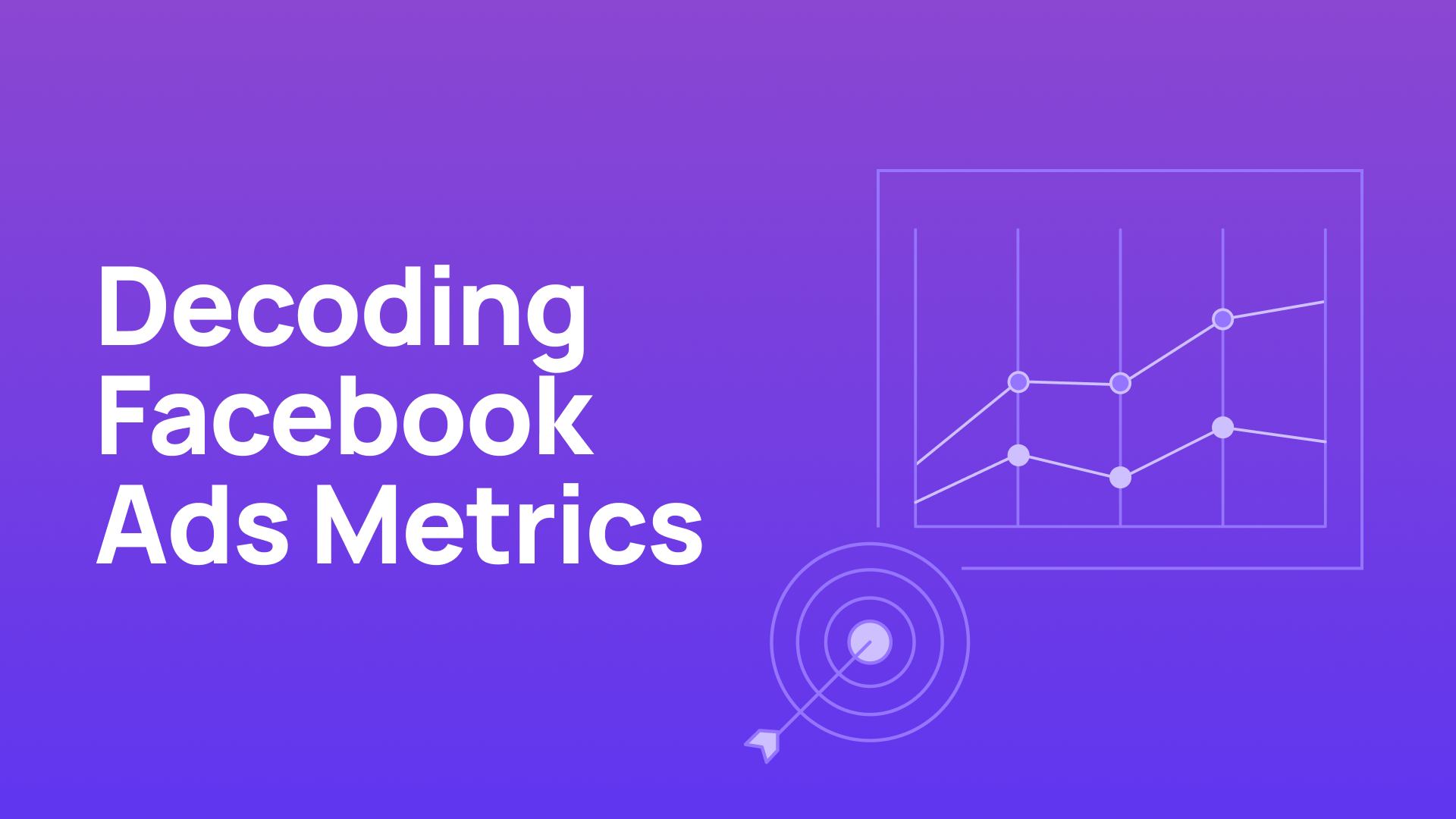Facebook Ads, a very powerful tool for digital marketing professionals, lets businesses reach out to group of highly targeted audience. Creating ad campaigns is just one part of the process – understanding the ads and analyzing their performance is important for optimizing campaigns and achieving better results.
By focusing on key metrics, marketers can refine their strategies, improve their ad performance, and ultimately drive more conversions.
In this article, we’ll break down the key Facebook Ad metrics you should track, what they mean, and how to use them effectively.
1. Click-Through Rate (CTR)
What it is: Click-Through Rate (CTR) is the percentage of people who clicked on your ad after seeing it. It’s calculated by dividing the total number of clicks by the number of impressions and then multiplying by 100.
Why it matters: CTR is a great indicator of how compelling your ad is. A high CTR suggests that your ad is engaging and relevant to your audience. If your CTR is low, it might mean that your ad copy, creative, or targeting needs to be revised.
How to use it:
- Improve Ad Copy and Visuals: A low CTR might indicate that your visuals or messaging aren’t resonating with your audience. Test different headlines, images, and CTAs (Calls to Action) to improve CTR.
- Targeting Adjustments: If your CTR is low despite strong visuals and copy, review your audience targeting. You may be reaching the wrong audience or using broad targeting options.
2. Cost Per Click (CPC)
What it is: Cost Per Click (CPC) is the average amount you pay for each click on your ad. It’s calculated by dividing the total ad spend by the number of clicks.
Why it matters: CPC helps you gauge how cost-effective your ad is at driving traffic to your website. A high CPC can be a red flag, signaling that you’re paying too much for traffic or that your ad isn’t resonating with your audience as it should.
How to use it:
- Monitor and Optimize Bidding: Keep an eye on your CPC to ensure you’re getting a good return on investment. Consider adjusting your bid strategy or using automatic bidding to manage costs better.
- Ad Relevance: If your CPC is high, consider reviewing your ad relevance score (discussed below) and making improvements to your ad copy or targeting to lower the cost.
3. Conversion Rate
What it is: Conversion rate measures the percentage of people who clicked on your ad and then completed a desired action (such as making a purchase, signing up for a newsletter, etc.). This metric can vary based on your campaign objectives.
Why it matters: A high conversion rate indicates that your ad is not only engaging but also persuading people to take the desired action. It’s one of the most critical metrics for measuring the effectiveness of your Facebook Ads.
How to use it:
- Optimize Landing Pages: If your conversion rate is low, the issue might be with your landing page rather than the ad itself. Ensure that the landing page is relevant, user-friendly, and aligned with the ad’s messaging.
- Refine Targeting: If your CTR is good but your conversion rate is low, you may be targeting the wrong people. Reassess your audience and look for ways to refine your targeting based on demographics, behaviors, and interests.
4. Return on Ad Spend (ROAS)
What it is: Return on Ad Spend (ROAS) measures the revenue generated for every dollar spent on your Facebook Ads. It’s calculated by dividing the revenue from your ad campaign by the amount spent on ads.
Why it matters: ROAS is a direct indicator of profitability. A high ROAS means that your ads are effectively driving revenue, while a low ROAS suggests that you need to adjust your campaign to make it more cost-effective.
How to use it:
- Evaluate Campaign Profitability: Use ROAS to understand which ads are delivering the best return and which ones may need optimization or removal. If your ROAS is lower than expected, consider lowering your ad spend or adjusting your strategy.
- A/B Testing for Improved Performance: Test different creatives, copy, and offers to improve ROAS. Use the data from these tests to make informed decisions on where to allocate your ad budget.
5. Ad Relevance Score
What it is: The Ad Relevance Score is a rating (from 1 to 10) that Facebook assigns to your ad based on how well it resonates with your target audience. Facebook considers factors like engagement rate, CTR, and feedback from users.
Why it matters: A high relevance score means that your ad is relevant and engaging to your audience, leading to better placement and lower costs. A low relevance score can lead to higher costs and poorer performance.
How to use it:
- Improve Targeting and Messaging: If your relevance score is low, consider refining your targeting to ensure you’re reaching the right audience. Also, test new ad copy or creative to boost engagement.
- Keep Testing: Continuously optimize your ads by testing different variations of targeting, copy, images, and CTAs to maintain or improve your relevance score.
6. Impressions and Reach
What they are:
- Impressions measure how many times your ad has been shown to users, regardless of whether they clicked on it or not.
- Reach refers to the number of unique individuals who have seen your ad.
Why they matter: Impressions help you understand how many times your ad is being served, while reach shows you how many different people have seen it. Both are essential for measuring brand awareness and the overall visibility of your campaign.
How to use it:
- Maximize Reach for Awareness: If your goal is to raise brand awareness, focus on increasing reach. Ensure your targeting is broad enough to expose your ad to as many people as possible.
- Review Frequency: Be cautious if your impressions are high but reach is low, as this could indicate that the same people are seeing your ad multiple times (high frequency), which can lead to ad fatigue.
7. Frequency
What it is: Frequency refers to the average number of times a person has seen your ad. High frequency means that the same individuals are repeatedly exposed to your ad.
Why it matters: High frequency can lead to ad fatigue, where users become less responsive to your ad. If your frequency is too high, you may want to refresh your ad creative or adjust your targeting.
How to use it:
- Refresh Your Creative: If your frequency is rising but engagement is dropping, consider updating your ad design, copy, or CTA to re-engage your audience.
- Adjust Targeting: Consider narrowing your targeting or running multiple ads with different creatives to avoid overexposure to the same audience.
Conclusion
Tracking Facebook Ad metrics is essential for running successful campaigns. By monitoring key metrics like CTR, CPC, conversion rate, ROAS, ad relevance score, impressions, reach, and frequency, marketers can make data-driven decisions to optimize their ads and improve campaign performance. Always remember that Facebook Ads is not a “set it and forget it” platform—constant monitoring and adjustments are necessary for sustained success.
By understanding and interpreting these metrics, you’ll be able to refine your ad strategies, maximize your budget, and ultimately achieve your marketing goals.

